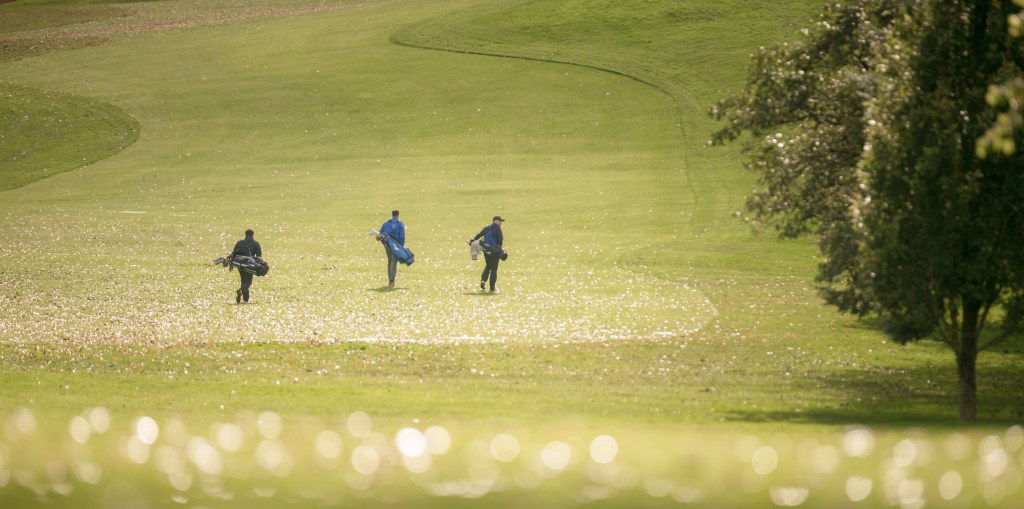Larry is beginning to love golf again. Like many of the nearly 6.2 million people who returned to the game or picked up a club for the first time in 2020 – the highest annual number on record – his work-from-home situation provided the perfect opportunity to get in a quick nine throughout the week. In fact, the 9-hole round has become Larry’s go-to booking at his local muni.
More than 500 million rounds of golf were played on U.S. courses in 2020, according to the National Golf Foundation – the most in a decade. Limited travel, above average weather, the flexibility of working from anywhere and many new faces on the golf course boosted rounds nearly 14 percent. And many of golf’s new faces, like Larry, prefer to play 9 holes.
So, who is the 9-hole golfer? Well, it can be almost anyone who places a budget on time, money and, in some cases, patience. As we all know, golf is not an easy sport, so it shouldn’t come as a surprise that many beginners prefer to start with 9 holes as a means of self-preservation.
“People want to get out and get active, and a lot of them don’t have the time to play 18 holes,” said Jonathan Parsons, Director of Golf Operations at Schaumburg Golf Course in Illinois, a 27-hole facility owned and operated by the Schaumburg Park District. “It’s especially true for beginners just getting into the game.”
Parsons said at one point his golf course didn’t even offer 9-hole golf due to lack of demand. “But it’s exploded in the last few years,” he said. “The 9-hole golfer type for us is more across the board than ever before. It’s a big part of what we do and it’s worked out well, so we’re going to ride this wave for a while.”
“Our course is on the shorter side, so we get a lot of seniors who prefer 9-hole play,” said Warren Orr, PGA Head Professional at Foster Golf Links in Tukwila, Wash., located just south of Seattle. He said a lot of his senior business also is through league play, which the course hosts each weekday beginning at 3:30 p.m.

“We have so many leagues that we use both the front and back 9,” Orr said. “We’ll also open up 9-hole rounds to the general public starting at 1:30 and we fill most of those, so those four hours each weekday become one of our busier times.”
GolfNow data from the last year reveals a significant uptick in its 9-hole reservations across the board, with the biggest increases occurring Tuesday-Friday before 8 a.m. and after 4 p.m.
Increased interest across the entire spectrum of golfers coupled with more acceptance among golf course operators as another way to keep a full tee sheet has resulted in 9-hole play in recent years, representing approximately 25 percent of all rounds played in the U.S.
During the current health pandemic, the 9-hole concept has attracted a variety of people and preferences, like the early risers who prefer to play the back 9 when the day’s first 18-hole group tees off on #1; the after-workers and lunch-timers who take advantage of their flexible work schedules; the senior set, who have been there and done that and may not have the stamina for a full 18 holes; and the newbies, of course, who were drawn in unprecedented numbers to the game in 2020. Those in the newcomer group have been highlighted by the largest increase in juniors since 1997 (+25%), as well as impressive numbers both for women (+8%) and non-Caucasian golfers (+6%).
“Every golfer is a 9-hole golfer at one time or another – even Tiger Woods,” said Brian Skena, manager of PLUS Business Services for GolfNow. “For beginners, 9 holes is more approachable and less daunting. For seasoned veterans, 9 holes is either a time to practice or extend your day because 18 just wasn’t enough. Private club members play 9 holes all the time. Daily fee courses need to recognize the same demand for 9-hole golf exists at their facilities and find a way to meet that demand.”
Skena, a PGA professional who identifies as a recreational golfer, also throws avids into his mix of golfer personas. These golfers consider shorter rounds a great strategy for game improvement.
“I try to practice playing situations whenever I can,” he said, “so finding times when the course is less congested and no one is pushing me from behind allows me to really focus on the process. I’m not worried about keeping score, so I just play 9 – or less, on occasion, if time is an issue. Practice and playing 9 is a big part of any player development strategy.”
With all the gains in 2020, one has to wonder what steps golf courses are taking to retain or grow their numbers. Focusing on customer service and golfer preferences for the new set of golfers – and the old guard, as well – are sure to play a major factor. Golf course operators know this, which is why nearly 90 percent of 18-hole public golf facilities in the U.S. offer 9-hole rates. But offering 9 holes is only part of a successful equation. Savvy operators also are optimizing pricing and inventory when it comes to 9-hole play. Are you?


